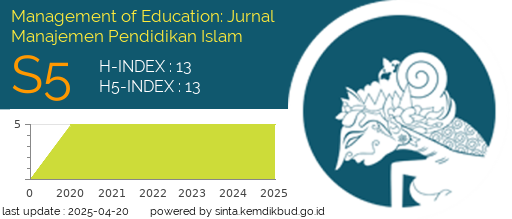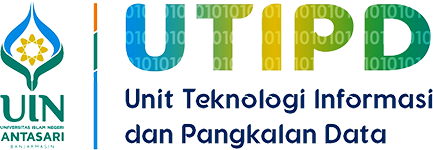The Effect of Emotional Narratives on Instagram Reels on Student Enrollment Interest with Audience Engagement as a Mediator
DOI:
https://doi.org/10.18592/moe.v11i2.17408Keywords:
Emotional Narrative, Instagram Reels, Enrollment Interest, Audience EngagementAbstract
Schools increasingly use Instagram Reels as a promotional medium to build emotional closeness with prospective students. Researchers believe emotional narratives increase enrollment interest, but audience engagement plays a key role in mediating this effect. This study used a quantitative survey method on 141 students at SMKN 1 Ponorogo. The instrument consisted of a 4-point Likert scale questionnaire, tested for validity and reliability using SmartPLS 3.0. Researchers analyzed data using PLS-SEM to examine direct, indirect, and mediating effects. The results showed that emotional narratives significantly influenced audience engagement (β = 0.647; p = 0.000), and audience engagement significantly influenced registration interest (β = 0.594; p = 0.000). The direct effect of emotional narratives on registration interest is positive but insignificant (β = 0.166; p = 0.121). This study found a full mediating effect with a significant indirect influence (β = 0.384; p = 0.000). The R² values of 0.418 for audience engagement and 0.508 for enrollment interest indicate a moderate contribution of the model. These findings confirm that emotional narratives are compelling only when accompanied by strategies encouraging active audience interaction, increasing the likelihood of prospective students enrolling.References
Abdul Rahman Shaleh & Muhbib Abdul Wahab. (1976). Didaktik Pendidikan Agama. Bulan Bintang.
Abu Bakar, M., Umroh, K. A., & Hameed, F. (2023). Improving Quality Islamic Education for Today’s Generation. At-Tadzkir: Islamic Education Journal, 2(2), 118–128. https://doi.org/10.59373/attadzkir.v2i2.42
Adib Rianto & Mujib Ridlwan. (2024). Strategi Pemasaran Lembaga Pendidikan Berbasis Media Sosial dalam Mendorong Kuantitas Peserta Didik di MA Assalam Bangilan. Tadbir: Journal of Islamic Education Management, 2(1), 125–142. https://journal.uaindonesia.ac.id/index.php/tadbir/article/view/851
Afif Alhuda, Firdaus Yuni Dharta, & Flori Mardiani Lubis. (2024). Aplikasi Media Sosial Instagram Sebagai Media Komunikasi Pemasaran Wedding Photography “Serenity Photoworks.” Jurnal Ilmiah Wahana Pendidikan, 10(1), 6–16. https://doi.org/10.5281/zenodo.10463717
Barreto, M., & Ellemers, N. (2000). You Can’t Always Do What You Want: Social Identity and Self-Presentational Determinants of the Choice to Work for a Low-Status Group. Personality and Social Psychology Bulletin, 26(8), 891–906. https://doi.org/10.1177/01461672002610001
Eldeeb, G., & Mohamed, M. (2020). Understanding the Transit Market: A Persona-Based Approach for Preferences Quantification. Sustainability, 12(9), 3863. https://doi.org/10.3390/su12093863
Genzer, S., Rum, Y., Krämer, U. M., & Perry, A. (2024). I See You: Seeing One’s Partner during Emotional Communication Enhances the Affective Experience and Promotes Prosocial Behavior. PsyArXiv. https://doi.org/10.31234/osf.io/4j8w3
Ilham Wahyudi. (2023). Pemanfaatan Fitur Reels Sebagai Media Komunikasi Pemasaran Pada Akun Instagram @mixuesudirmanpku [Skripsi]. Universitas Islam Negeri Sultan Syarif Kasim.
Imam Ghozali & Hengky Latan. (2015). Partial Least Squares: Konsep, Teknik, dan Aplikasi Menggunakan Program SmartPLS 3.0. Badan Penerbit Undip.
Issam, A. S., & Mohd Said, O. F. (2024). Consumers’ Online Brand-Related Activities (COBRA): Article Review. International Journal of Academic Research in Accounting, Finance and Management Sciences, 14(4), 118–132. https://doi.org/10.6007/IJARAFMS/v14-i4/22906
Jamaludin, Datep Purwa Saputra, & Novianty Elisabeth. (2024). Strategi Komunikasi Pemasaran Dalam Penerimaan Peserta Didik Baru. Journal of Comprehensive Science, 3(5). https://doi.org/10.59188/jcs.v3i5.694
Marinu Waruwu, Siti Natijatul Pu`at, Patrisia Rahayu Utami, Elli Yanti, & Marwah Rusydiana. (2025). Metode Penelitian Kuantitatif: Konsep, Jenis, Tahapan dan Kelebihan. Jurnal Ilmiah Profesi Pendidikan, 10(1), 917–932. https://doi.org/10.29303/jipp.v10i1.3057
Mohamad Nurul Anam, M Fakhri K, Noufan Anwar, & Noufal Alwan. (2025). Menelaah Dinamika Komunikasi Emosional dan Kebingungan Identitas Melalui Analisis Isi Narasi Lirik “Mangu.” JIPMukjt : Jurnal Ilmu Pendidikan Muhammadiyah Kramat Djati, 6(1), 463–478.
Putri, E. A. N., & Widodo, A. (2024). Keterlibatan Audiens dalam Mendukung Karya Influencer di Instagram. Jurnal Netnografi Komunikasi, 3(1), 17–33. https://doi.org/10.59408/jnk.v3i1.32
Sirojuddin, A., Ashlahuddin, A., & Aprilianto, A. (2022). Manajemen Kurikulum Terpadu Berbasis Multiple Intellegences di Pondok Pesantren. Munaddhomah: Jurnal Manajemen Pendidikan Islam, 3(1), 35–42. https://doi.org/10.31538/munaddhomah.v3i1.143
Slameto. (2013). Belajar dan Faktor-Faktor yang Mempengaruhinya (Ed. Rev. cet. 6). Rineka Cipta.
Sugiyono. (2015). Metode Penelitian Kuantitatif, Kualitatif, dan R&D. Alfabeta.
Syerina Evayanti, Ponirin Ponirin, Maskuri Sutomo, & Farid Farid. (2024). Strategi Pemasaran Dalam Meningkatkan Minat Siswa Baru Pada SD Negeri 17 Palu. MENAWAN : Jurnal Riset Dan Publikasi Ilmu Ekonomi, 2(2), 230–236. https://doi.org/10.61132/menawan.v2i2.379
Van Laer, T., Ruyter, K. D., & Wetzels, M. (2014). Antecedents and Consequences of Narrative Transportation: A Meta-Analysis. Journal of Consumer Research, 40(5), 797–817. https://doi.org/10.2139/ssrn.2033192
VanMeter, R. A., Grisaffe, D. B., & Chonko, L. B. (2022). Of “Likes” and “Pins”: The Effects of Consumers’ Attachment to Social Media. Journal of Interactive Marketing, 32(1), 70–88. https://doi.org/10.1016/j.intmar.2015.09.001
Walter R. Fisher. (1987). Human Communication as Narration: Toward a Phylosophy of Reason, Value and Action. University of South Carolina Press.
Downloads
Published
How to Cite
Issue
Section
License
Copyright (c) 2025 Irma An-Nisa’ Mahirohqudsi, Miftakhul Nur Jannah, Muhamad Burhan Mujahidin, Maulana Abiyyu Nur Firdaus, Muhammad Fikria Najitama

This work is licensed under a Creative Commons Attribution 4.0 International License.
Authors who publish with this journal agree to the following terms:
- Authors retain copyright and grant the journal right of first publication with the work simultaneously licensed under a Creative Commons Attribution 4.0 International that allows others to share the work with an acknowledgement of the work's authorship and initial publication in this journal.
- Authors are able to enter into separate, additional contractual arrangements for the non-exclusive distribution of the journal's published version of the work (e.g., post it to an institutional repository or publish it in a book), with an acknowledgement of its initial publication in this journal.
- Authors are permitted and encouraged to post their work online (e.g., in institutional repositories or on their website) prior to and during the submission process, as it can lead to productive exchanges, as well as earlier and greater citation of published work.









 This work is licensed under a
This work is licensed under a 